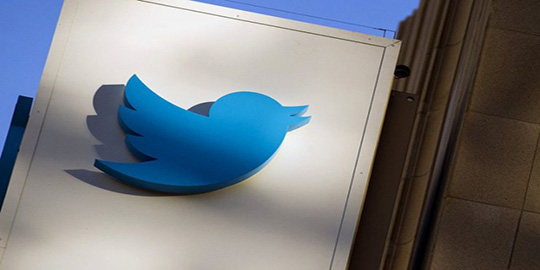
Technology Observatory December 29 - January 4
In this week's technology observatory we bring you the latest news from the technological world, including a few compilations and previews:
● Twitter closes the sign-in session on its official app for Android and turns users into prophets
● The novelties expected at the upcoming CES 2015
● Apple now lets you return apps (only in the European Union)
● Toss your gadgets out with the garbage? It will be illegal in New York as from 2015
● Gmail up and running again in China
● The 12 (plus one) smartphones that marked 2014
● UBER closes in Spain
● Consolidation, convergence, 4G in virtuals... A busy 2014 in the Spanish telecommunications industry
● Samsung TVs to run Tizen in 2015
● Twitter now displays summaries with the most relevant content on your timeline
On the night of December 28-29, the social media site Twitter experienced issues with the official client for Android: it locked out all users due to an error with its servers, which seemed to think it was already 2015. The sign-in crash on the official client was global (the failure was acknowledged) and it blocked the social media site for several hours. Non-official clients did not experience any issues and continued to operate as normal. At the same time, an error in the server date turned TweetDeck users into nothing short of prophets. December 29, 2015 was the date that appeared, meaning that tweets on the client were shown to be one year old, allowing users to predict all kinds of things.
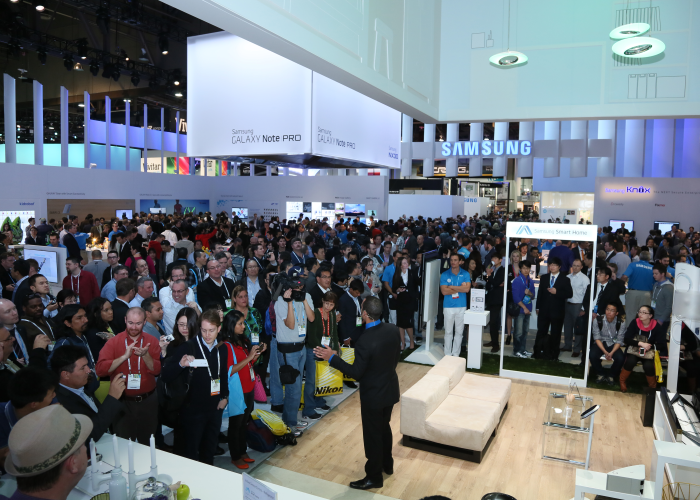
In a few days, specifically from January 6 to 9, Las Vegas will host CES 2015, one of the world's greatest showcase events for information technologies and consumer electronics, attracting 3,600 companies from 140 different countries. The latest trends that will leave their mark on this year's edition include the following:
1. 3D Printing: Thirty manufacturers will descend on Las Vegas with their novelties, most notably smaller and more compact printers for domestic use. They will take up 1,400 square meters of exhibition space.
2. Drones: Sixteen manufacturers of unmanned systems will unveil advances in this technology for fields like assistance in rescue missions and sport. They will occupy 600 square meters of the exhibition floor.
3. Internet of Things: This will be the central theme of the January 5 keynote conference at CES 2015, to be delivered by Samsung Electronics CEO BK Yoon, who has said how "thrilled" he is to join "the conversation at CES this year to discuss how the Internet of Things will unlock infinite possibilities (...) transforming the way we live".
Rollouts to bear in mind
There's been a lot of talk about the possibility of Samsung using CES 2015 to unveil its long-awaited Samsung Galaxy S6 smartphone, but everything is still up in the air. If we're lucky, we might see the first images of what is expected to be one of the great successes of 2015. There are rumors that its main specifications will include a 5.5-inch display with QHD resolution and the octa-core Exynos 7420 processor. In any case, the CES will provide an introduction to the Xperia Z4 Ultra and Z4 Compact. Besides, Sony might, if not present, at least give a few clues about an imminent TV device fitted with the Android operating system. Asus will also unveil a new smartphone about which we know next to nothing except for the broad outlines offered in a video on its Facebook profile: the slogan "See what others can't see", the water resistant characteristic, and the presence of what appears to be a dual flash (in the style of the HTC One M8) of a second camera lens (in the style of the Huawei Honor 6 Plus). Meanwhile, LG will take the opportunity to present its new 8K television, which arrives before the 4K sets have even reached the consumer market. The only things we know so far are its resolution (7680 x 4320) and its code name ('Mabinogion'). The new generation of its Music Flow Wi-Fi range was unveiled four months ago at another of the world's major electronic events, the IFA. The new models likely to be presented are the H4 (portable loudspeaker with built-in battery), Wi-Fi H27 and HS91 (sound bars), and the Blu-Ray BP550 (streaming music player). What we are not expecting are any novelties from Microsoft about Windows 10, as they announced not long ago that they would be organizing their own 'Windows event' in late January.
The return of Kodak
Following the massive sale of patents with which a declining Kodak tried to refloat its finances, the still popular brand is keen to show that it's not dead yet... a point it will prove by unveiling its first camera with an Internet connection and its first two devices equipped with Android: a tablet and a 4G smartphone, made in partnership with Bullitt Group. Kodak promises that the terminals will have advanced photographic and image management capabilities. All of these devices will reach the market during the second half of 2015.
Excellent news for those of us who live in the European Union: from now on, Apple will let you return applications to the App Store within 14 days of purchase and will refund the money spent. You don't even have to give a reason for returning the item. Until now, purchases made through the App Store were regarded as definitive and refunds were only made in very specific cases after Apple staff had examined each one separately and decided on the course of action, as reported in our source 9to5Mac. In fact, the new policy is not only valid for applications but books, music, movies and TV programs as well. You can check it out for yourself in the "Report a Problem" section of the Apple website. Why this change? The answer is the new consumer rights directive, which applies to the entire European Union but does not affect the United States or Canada. It's not only Apple that has to apply the policy but every digital service provider in Europe. It remains to be seen whether the move will lead to fraudulence. Indeed, Twitter is already full of comments bragging about returning apps, games and books after using or completing them.
One of the greatest problems caused by electronic devices is the waste they generate at the end of their useful life, and in fact various initiatives have been implemented in different parts of the world to promote a recycling culture, given that gadgets and their components can be harmful to the environment. However, recycling our devices often means taking them to special garbage disposal centers, a task that is quite complicated in towns that don't have their own facility. Even when there are facilities on hand, citizens don't always make use of them, which calls for more drastic measures such as penalties for not recycling electronic waste. As from January 1, 2015, throwing any device with a circuit board into the garbage in New York will be considered illegal and punished with a fine of up to $100 per item for the perpetrator. This is because these items will now be classed as "hazardous waste", a category that will also cover cathode ray tubes from old TVs and monitors as they contain lead and cadmium. The measure reflects New York's attempt to become the first American state to recycle all of its organic and inorganic waste. The next step is to do the same with electronic waste, and that means taking measures to "educate" citizens, who are the first to make decisions of this type. This will not only encourage greater use of recycling centers but in particular will make companies responsible for the waste generated by their products. It will also force them to play an active role as they too will be fined for every device they fail to recycle. In fact, this measure was introduced in 2011 due to the high volume of electronic waste, and companies like Dell, Apple, LG, Acer, ASUS and others, plus the chains Walmart and Best Buy, already support it by awarding incentives to those who take their devices to an authorized recycling center. Similar measures already exist in 20 states, but most of them are targeted at companies rather than citizens, who tend just to be on the receiving end of awareness campaigns. It is therefore important to implement actions of this type and create a so-called e-waste culture before the problem becomes insuperable. This is clearly just the first step and there is still much to do. Until all companies are incorporated in the program and while there are still chains like Target that refuse to accommodate a recycling center in their stores, the disposal of this waste is largely down to us as citizens.
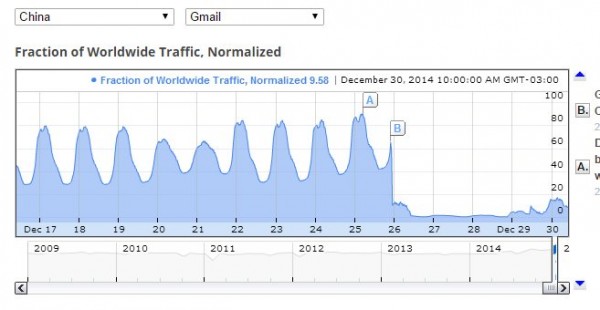
Over Christmas, Gmail mysteriously disappeared in China. Google investigated the matter but could find no technical problems, and the Chinese government issued no official statement about blocking access (though it did express its opinion about Google needing to respect the country's laws by delivering information as and when required by the government and maintaining the local infrastructure). Now, as reported in FT and in Google's transparency report, the company's mail service has been restored. Gmail traffic is gradually picking up in the country, although it still remains far below its normal level. There is no indication as to whether the service was restored following negotiations between Google and the Chinese authorities as both sides are concealing a lot of information about the matter. Some users are already celebrating the restoration of the service on Weibo, China's Twitter-like service, and receiving messages via IMAP and POP, albeit more slowly than before. Blocking an email service in a country like China, where there are suppliers and clients from all over the world who use this system to communicate with each other, is a much more serious problem than it might seem at first sight. It can affect the confidence level of companies thinking about doing business in the country and it also affects the image of a government that boasts about managing one of the world's largest economies, so actions of this type cannot be ignored. Of course, there is a possibility that the apparent restoration of service is due to a technical failure of the block, so we will be keeping our ears to the ground for any new developments in the matter.
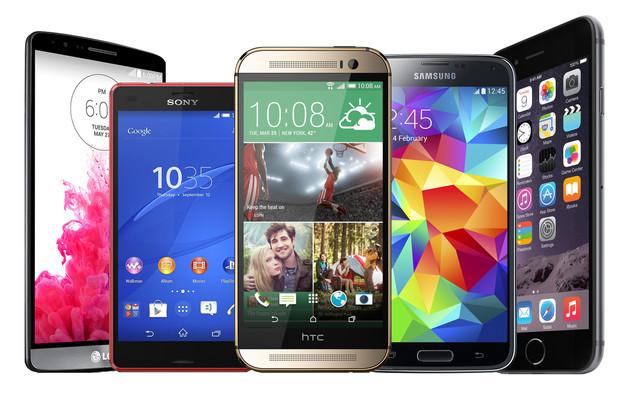
The year 2014 is all but over and having tested all of the best smartphones during the course of the last 365 days, the time has come to take stock of what the year yielded in the high-end, mid-range and entry-level categories. But instead of examining the best terminals individually, we'll summarize 2014 with 12 smartphones that marked the year for one reason or another, either positively or negatively.
Throughout 2014 the Nexus 6 was one of the most greatly anticipated terminals. So much so that we spent more than a year talking about it since the Nexus 5 was unveiled. With such a precedent, expectations were always going to run high, and this is the reason for the general sense of disappointment with the terminal. Even so, the disappointment was more on a sentimental level than focused on the specs, which for the first time in years looked perfect on paper and stood up to our analysis while nevertheless failing to meet expectations to become the top Android device of the year. A price in line with other high-end terminals proved too exorbitant in a range in which consumers take value for money for granted, because the fact is that the Nexus 6, while more complete than earlier Nexus models in terms of specs, just doesn't make the grade. Added to which, the move to a 6-inch display was a risky one as it means a fairly large terminal, possibly larger than what run-of-the-mill users are willing to accept.
For Apple, 2014 wasn't just any year. After years of holding out, the iPhone 6 Plus, its first amazing phablet, represented a high-end acknowledgment of the current market trend. It seems that sales were pretty good as well, along with the iPhone 6. The iPhone 6 Plus is outstanding in its size but its weight and thickness as well, and finally we have an Apple smartphone in which autonomy is mentioned not as an issue but as something to be praised. In addition to the excellent camera and impressive display, there are three key features that clearly make this first phablet from the company one of the best of the year. Leaving aside the controversial accidental bending, about which little more was heard and that was sparked by a video that brought enormous benefits for its "creator", price is the one major issue surrounding the iPhone 6 Plus, especially if you go for the models that make sense: 64 and 128 GB.
Of all the Galaxy S terminals that Samsung has released since the original one, the Galaxy S5 has had the least media impact and the lowest sales. The robust distribution figures that Samsung announced every time a Galaxy S passed a new million mark were conspicuous by their absence this year... which is odd when you think that the Galaxy S5 is the best terminal in the family. There is little fault to find with the Galaxy S5, as we pointed out in our analysis, but it had to contend with the release of numerous other terminals this year, most notably the Xperia range and the LG G family, the shadow cast by its more media-friendly brother (the Note 4), and a medium range whose value for money created fierce competition for more expensive terminals.
As counterproductive as it might seem, the strategy of two franchise terminals (in fact, three this year, as we shall see) works well for Sony. At least at the media level. In spite of the success of the Xperia Z2 released early in the year, in the final quarter Sony took a gamble with a new Xperia Z3 which fine-tuned the design, display and camera of the previous model and won the 2014 Xataka Awards. The Xperia Z3 was not the absolute best terminal overall (though its autonomy is a serious candidate), but there's no doubt that it was the most balanced and complete one for the general consumer market. Its camera, which you have to experience, the display's outdoor performance, the design, and its water resistance are the key assets, with excellent autonomy providing the final touch.
The great surprise of the year in the circles most clued up about the latest smartphone technology was undoubtedly the OnePlus One. Its specs are practically impeccable, and the weaker points or areas for improvement that we discovered on closer analysis are outweighed by its price tag, something that is slightly unfair to other rivals who don't play in the zero-profit league, given that it is more of an experiment than a future commercial gamble. As an experiment the terminal was successful, and it became the indisputable king of the mid-to-high-end range of terminals as far as value for money goes. However, the exclusive and very limited purchase mode (mostly by invitation only), coupled with various problems surrounding batches of terminals, cast a certain amount of shade and, more importantly, sowed seeds of doubt about its feasibility in a large market beyond a token presence.
Very similar to the OnePlus One, as regards the perception that a terminal can offer little more for its price, is the Moto G 2014. If it thumped the table last year, with Nokia and bq its sole rivals in the entry level, this year it left its rivals straggling even farther behind, at least in the Android range. With a price that makes it literally irresistible if you're looking for a lower-end Android, the improvements to the camera, display and general performance, coupled with the speed at which it receives the latest Android updates, it became a rival that in certain cases even surpasses the medium range. True, you have to make certain concessions, as regards autonomy, for example, but there's really little more you can ask of the Moto G 2014.
For some, the Sony Xperia Z3 Compact is an even better model than the classic Z3 if you're not looking for a large display. There's no comparison in terms of the design, but the display and the autonomy, in particular, are spectacular. Sony really got it right with this device because, with rare exceptions, manufacturers tend to focus the high end on large displays, whereas the Sony Xperia Z3 Compact can only be considered small in terms of its display (and only when you compare it with the giants). In terms of everything else it was undoubtedly one of the best terminals of the year.
The phablet of the year, and for many the best terminal of 2014, can no longer be described as a rare breed among the high end. The Note 4 managed to consolidate Samsung’s phablet leadership with a family that is already brazenly eclipsing its Galaxy S range. Indeed, for many in the market it is the Koreans' benchmark terminal, irrespective of its size. A robust versatile camera, good autonomy and an unbeatable display, coupled with Samsung's special touch to the Android interface for extra value and its S-Pen, all make for a model of smartphone that is sure to be imitated next year.
Although Xiaomi is not officially available outside China (Meizu does officially permit shipping to Europe), its terminals are the talk of the town. They've been offering good models at prices below the leading competition for years, albeit with certain concessions to justify those prices. One of their benchmark models in 2014 was the Xiaomi Mi4, a large terminal with an excellent display and well balanced in other aspects. All for a price that consumers regard as more in line with its specifications.
It reached the market in April, more or less like the Galaxy S5, and like the Samsung model time has left it trailing behind other high-end terminals. As in the case of the Koreans' model, it does a fairly good job in nearly every aspect, but it has fierce competition. Despite one of the best designs and displays of the year, the HTC One M8 falls down on its camera. The first version was much better in the dark than its competitors, but that's no longer the case following the improvements introduced by the best high-end terminals this year, added to which the limited resolution of the sensor meant that it was somewhat ignored, unjustly so.
Gigantic and with many components from Huawei itself, the Ascend Mate 7 nevertheless deserves a place among the terminals that marked 2014 due to its enormous display and by far the best autonomy of the year. The Chinese giant certainly didn't do anything by halves with this terminal, and there's no doubt it's an option worth taking into account for anyone who wants a large work space, under Android, for several busy days without having to worry about charging the battery.
The LG G2 made a tremendous impact on users so much was expected of its successor, the LG G3. And LG didn't disappoint insofar as managing to include a large display – QHD, though it turned out to be one of its small mistakes at the time – in a relatively contained terminal as far as dimensions go. But in the end, the display became its main handicap, being both too large and because of the resolution. For the rest, it did make the grade, though we were left wondering what it would have meant for LG if the terminal had not had such a large display but had maintained a general, more compact size and the autonomy that so impressed LG G2 users.
2014 was a transition year for Lumia terminals. There were rollouts and novelties, but mainly in less media-friendly ranges than the one that usually hugs the limelight. After corroborating the change of hands for the Nokia mobile division, 2015 looks promising, although what is set to become the first Microsoft terminal was introduced this year: the Lumia 535. However, that change of name is just about all there is. The rest remains the same, so we can expect a model with an excellent finish, a robust camera, good display, and one of the best ways of getting your hands on an entry-level Windows Phone (or smartphone in general). (Soon available in Spain.)
Following a ruling of illegality, Uber, the company that has had the taxi sector up in arms, has announced the closure – temporary, according to them – of its service in Spain, although it will continue to battle its case in the courts. Carlos Llobet, head of Uber in Spain, told El País that they decided to close the service because they want to "respect the law". The UberPOP service has been blocked since December 25 when communications between operators and credit card operators were cut off, although the company claims that they hadn't received the court ruling and had to go and collect it themselves. In any case, Uber believes the battle has not yet been lost and will wait and see whether Spain alters the legal framework to allow it to renew its activities. The company will also keep fighting in the courts and negotiating with the authorities while simultaneously trying to come up with new ideas to facilitate transport between private citizens that complies with Spanish legislation. In fact, they intend to hire more staff in Spain, although they are reluctant to reveal how many people currently work for them and point out that drivers do not count as staff. It's our guess that the new employees will be lawyers. Although they maintain that the closure is temporary, it's going to be very difficult for them to start operating again and this cessation of activities may well turn out to be permanent. Even so, let's not forget that there is no crime in using Uber. The company has been surrounded by controversy since the outset, with accusations of unfair competition that have finally led to this temporary closure. What do you think? Should Uber be legalized or were the courts right to outlaw it?
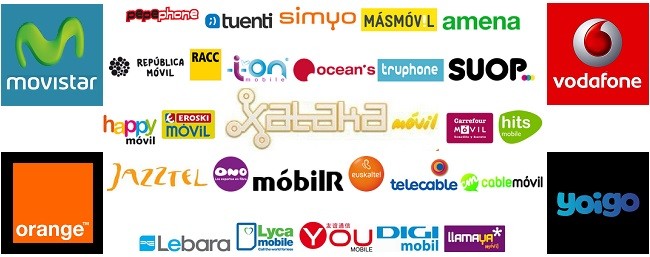
2014 was a busy year for Spain as regards telecommunications. The year 2013 had already seen the arrival of 4G networks, not to mention the rapid expansion of converged cell phone rates with calls at zero cents per minute and unlimited calls. But if that year telecommunications operators were preoccupied with rates and the deployment of 4G, 2014 witnessed many more fronts. Rates continued to improve and 4G reached more parts of the country, but it was also a year of market consolidation, the definitive rise of convergence, the boom in second brands, and the fuss surrounding 4G and the MVNOs.
Vodafone opened the can of worms by acquiring ONO
With a market divided up between four mobile network operators (Movistar, Vodafone, Orange and Yoigo) and five major fixed-line operators (as well as Movistar, Vodafone and Orange, ONO and Jazztel), plus a situation in which the price war had led to a fall in revenue for operators, it had looked like 2014 would see a reduction in the number of operators. After months of rumors about flirtations between Vodafone and ONO on the one hand and Orange and Jazztel on the other, it was finally the red brand that opened the can of worms by acquiring the country’s largest cable company. With not a peep out of the competition authorities, Vodafone now controls the only fixed network that can eclipse Movistar and its extensive fiber network. With less fixed coverage and only a minimal presence in high-speed networks, Orange was left trailing behind Movistar and Vodafone and obviously needed to react or risk missing the train completely. Thus, following news that Jazztel was negotiating the purchase of Yoigo, the French brand finally announced a deal with the Jazztel CEO to acquire the company, pending approval by the shareholders. The details of the acquisition have not yet been finalized as most of the Jazztel shareholders have yet to accept the deal. However, the shareholders are not only the stumbling block for Orange. It will also have to face harsh scrutiny from the competition authorities. The problem is that if the transaction goes ahead, the market will have shrunk from five to three major players in just under a year, following ONO's merger with Vodafone and Jazztel with Orange, and that means that both Brussels and Spain's national competition and market authority, the CNMC, might want to impose conditions. But these weren't the only deals as we also witnessed a merger between smaller telecommunications operators: MÁSMÓV!L and Ibercom. The union has had little impact for users so far, but 2015 will probably bring new developments, especially following the stream of acquisitions by the new operator.
Convergence is here to stay
If consolidation was one buzz word in 2014, convergence was another. The launch of Movistar Fusión in October 2012 forced all telecommunications operators with fixed and mobile networks to respond with their own products to unite the two types of network. Even virtual operators like Pepephone, MÁSMÓV!L and Eroski Móvil came up with converged products courtesy of deals with different operators. Today, now that the operators have fine tuned their offers after warming up their engines in 2013, nearly 8 million Spanish homes use the same operator for their mobile and fixed lines, and 1.9 million have even added access to pay TV to their converged packages. The success of these types of packages have enabled the three main telecommunications operators to cut their losses, while the virtual operators have grown more slowly, especially if we exclude the lines obtained through Jazztel and ONO from their figures. And the truth is that 2015 looks set to follow the same road.
Complications for Yoigo
Consolidation and convergence spell two major problems for Yoigo. When this operator first emerged it was renowned for its upper hand over the major operators, at least as regards rates, but the year 2014 could not have been worse. As well as the ordeal of trying to become a network provider for virtual operators, its rates are no longer all that different from those of its main rivals and its customer capture figures have suffered. Leaving aside the matter with Pepephone, which we'll come back to later on, Yoigo renewed its rates with some interesting improvements but they were soon matched or even surpassed by its most direct rivals. Yoigo recently invited the press to a conference that many of us expected to be a thump on the table as regards the rate war, but that turned out to be only partly true: the new Zero with 5 GB rate for 19 euros is appealing, but only for a very specific niche of the market. Following this less than innovative rate strategy, the country's youngest operator with its own network reported its worst results ever. Yoigo only managed to grow in the months during which it offered the greatest subsidies for terminals, with negative results in terms of new lines between January and October, and judging from this pattern of performance it seems likely that the operator will struggle to turn the situation around. As if that weren't enough, Yoigo was also impacted by the acquisition race started by Vodafone. A few days after the news broke that Jazztel was entertaining the possibility of acquiring the operator – its parent company seems inclined to pull out of Spain – Orange announced its own bid for Jazztel, leaving Yoigo without any suitors. With a converged offer in desperate need of improvement, all the operator can do now is return to its origins with rates that genuinely outperform those of the major operators.
Pepephone, the reluctant protagonist of the year
There is no doubt about who was the – albeit, reluctant – protagonist of the year: Pepephone. The virtual operator started the year with the announcement that it was leaving the Vodafone umbrella for coverage from Yoigo, and supposedly Movistar, the justification being that Vodafone had repeatedly refused it access to its 4G network, which Yoigo had now promised.
However, it soon became clear that the move would not be a bed of roses for Pepephone. Movistar refused to give its coverage to the operator through Yoigo, resulting in a standstill lasting several months until Pepephone finally tired of waiting for Yoigo and the competitions authority (CNMC) and signed an agreement directly with Movistar.
In the end, Pepephone won't be the first virtual operator with 4G
Despite the operator's good intentions, quite a few customers caught up in a controversy that had nothing to do with them decided to pack their bags and move to another operator. It also has to be said that while the matter between operators was being resolved, Pepephone neglected to improve its rates... unlike its main rivals which did improve them. By the time Pepephone managed to gain access to 4G, some customers had already migrated to Movistar coverage and other virtual operators had also achieved or were in the process of achieving the same thing. So you could say that the virtual operator practically lost a whole year and quite a few customers for wanting to be the first virtual with 4G, a goal it failed to achieve. Even so, its actions may well have paved the way for 4G to start reaching MVNOs.
If your brand doesn't work... launch a second one
Lastly, we can also say that 2014 was the year of the second brands. Movistar and Orange now have established second brands while Vodafone, seeing the success of its rivals' strategy, has also embraced the fashion of having a second (or third) brand with which to attack users not captivated by the main brand. Although Simyo and Tuenti Móvil are not strictly second brands of Orange and Movistar, they are still brands that provide them with customers and income. In both cases we have portability figures for every month of the year, and Simyo in particular performed particularly well in the final stretch of the year, capturing more than 10,000 lines net per month. We don't have the figures for Amena, but they will undoubtedly be very good with contained costs due to exclusive marketing online. Amena, Tuenti Móvil and Simyo all have one clear aim: to attack the customers who hold less interest for the main brand, such as users who spend less. In the case of Vodafone, which went through the motions of creating a second brand a few years ago, it seems that the Yu rates are not proving that successful and it has therefore just created Lowi. The new brand's main selling point is a single contract rate with a fairly customizable data bundle, as well as the possibility of keeping unused megas for the following month.
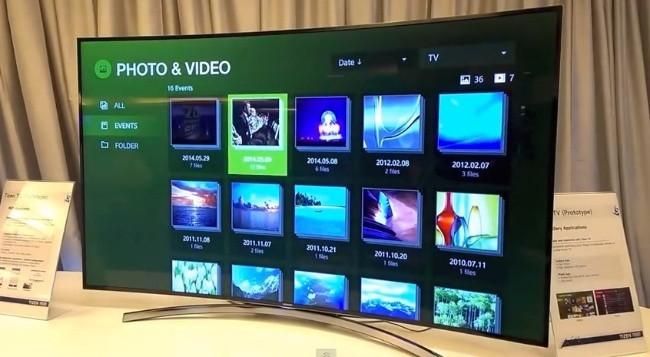
We begin the year with some hot news, at least as far as TVs go. While LG has told us to expect a lot of 4K and new technologies in its new portfolio of products, the guys at Samsung have decided to update the operating system in their TVs by switching to Tizen. It's proving difficult for this platform to conquer phones, and we've only seen a timid appearance in other devices like watches and cameras, but it now looks like TVs are where Tizen is going to gain its foothold in the market. Some were expecting this debut. Last summer Samsung revealed prototypes of TVs with Tizen as their operating system, and the company must have made fast progress to reach the CES with all of its artillery already loaded. This is their big TV gamble this year, and we hope it will make a difference to the user experience. TVs come with more and more technology and better panels, but the interfaces leave considerable room for enhancement, especially in terms of speed. Hopefully, the new offer will improve this situation as well as making life easier for developers. Let's not forget that the news broke just a few days ago that the PlayStation Now system would be built into future Samsung TVs. Needless to say, that possibility will also reach these new Tizen sets. It will be accompanied by services like Samsung Sports Live, Just Dance Now, Bingo HOME and Milk Video. Samsung is particularly proud of the connectivity between the new TVs and mobile devices, which will feature both Bluetooth LE and Wi-Fi Direct. Communication will be two-way: you'll be able to send a photo through the mobile application or watch a TV channel on your tablet (with the actual TV switched off). We'll have to wait for the CES in Las Vegas to find out more details, but at least we know that Samsung prefers its own platform to using something like Android. That's the same road another market leader has taken, i.e. LG with webOS.
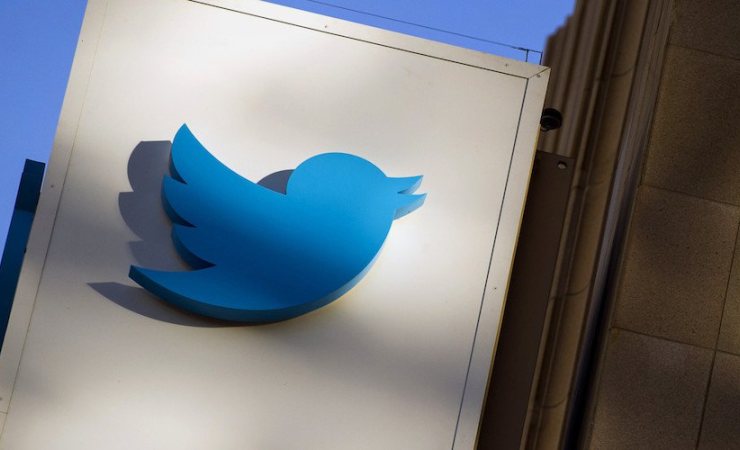
Since its early days, Twitter has maintained a linear structure for showing content, based primarily on time. In the beginning, when the social media site was "small", this seemed the best way of organizing posts. Now, though, the site has grown exponentially and more and more content is shared, which means that information needs to be prioritized. It is with this in mind that Twitter has rolled out a new feature called "While you were away". Basically, the new function recaps on your timeline the most important content you've missed since last opening the app. In other words, if five hours have gone by and you have hundreds of unread tweets on your timeline, the new Twitter function will select the most relevant ones and show them separately, considerably reducing the number of unread tweets and discarding the "chaff". Twitter still hasn't confirmed exactly how the new function works (such as parameters for deciding the importance of a tweet, whether it will be available in third-party clients, etc.), although it will almost certainly be exclusive to the official application and will be based on the number of retweets, favorites, impressions, and naturally the individual user's interests. The move is an attempt by Twitter to meet the needs of users who are beginning to reject chronological content management and want smarter management, like the type currently found on Facebook. If you prefer to go on as before, no problem: it seems Twitter will maintain the chronological structure intact. These recaps are already appearing in the mobile apps (only the official Twitter app for now) of numerous users, so in a few days it should be available to all users of the popular social media site.
